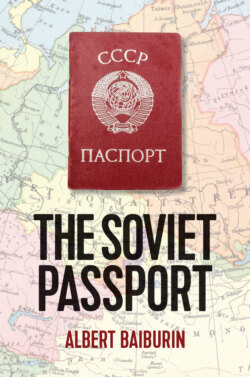Читать книгу The Soviet Passport - Albert Baiburin - Страница 18
3.
ОглавлениеIt is worth examining in more detail the level of trustworthiness attested to by a document, given that its fundamental purpose is to reflect or confirm certain details as ‘true’. Our everyday impression of the world is based on the supposition (and logic) of truth, sufficiency and identity, given that the truth and the lie are always interdependent. It is natural to want to clarify the dividing line between the two, thus making the world a more orderly place. The authorities are forever conducting various projects aimed at bringing about greater order. They do this with an inexhaustible enthusiasm. For them, the creation of a document is not merely symbolic but a genuine attempt to establish such a dividing line. Within this logic, what is ‘true’ is defined by documents. So the truth is not necessarily ‘the correct order of things’ per se, but something which is artificially created, above all with the help of documents. As a result, the document becomes the embodiment of trustworthiness. In its own way it is a conclusive act. There is no need to check the information contained in the document (for the checking of the documents themselves, see chapter 7). A particular ‘truth’ is created with the help of these documents, suitable for one situation or another.
From this it should be clear that such documents work only when there exist institutions which take upon themselves, if not the place of Almighty God, then at least the position of the ‘bearers of the truth’, since they give themselves the right to define the truth. The history of documents – from the edicts of princes to the certificates of the housing commission – illustrates that first and foremost it is the authorities that take this role upon themselves. Documents always reflect the authorities’ power in any culture (hence the formality and official nature of documents).18
A document, then, is the transfer of some kind of relationship (or of a person’s details, as in the case of a passport) into a different, documented reality. The document acts as a replacement for a particular object: ‘“Here’s my house”, he said, waving a sheaf of papers’. It is significant that when it comes to documents used for identification, they have become metaphors for the person’s surrogate; they are, as David Levy calls them in Scrolling Forward …, ‘talking things’.19
These ideas, which have been added to the document, are borne out in social interaction. A document becomes an actual document only when it is used for its primary purpose: when it certifies, affirms or proves something. Outside these situations, it is, in essence, a worthless piece of paper.20 Its link with what is thought to be ‘trusted’ makes the document a natural target for falsification (the reverse of its ‘truthfulness’).21 It is this link which makes the document a focus for mistrust. Nothing is so closely examined as documents. However, it is not the details contained within the document that are carefully checked (it is usually impossible to verify them) but what the details are encased in (its properties and so on), as it is usually assumed that the actual details have already been checked and verified. Documents can be falsified in two ways: the details of the document may be altered; or it may be made out to a totally different person. However, in this case the contents of the document have to be changed (such as inserting a false photograph). Both the ability to check the information contained in the document, and having a method for doing this are inextricably linked to its contents. So the document has to be examined in a much wider way. It is not just a question of how to create the document but, first and foremost, how it is going to be used. We might call this ‘the pragmatism’ of the document (this will be dealt with in the third part of this book).
